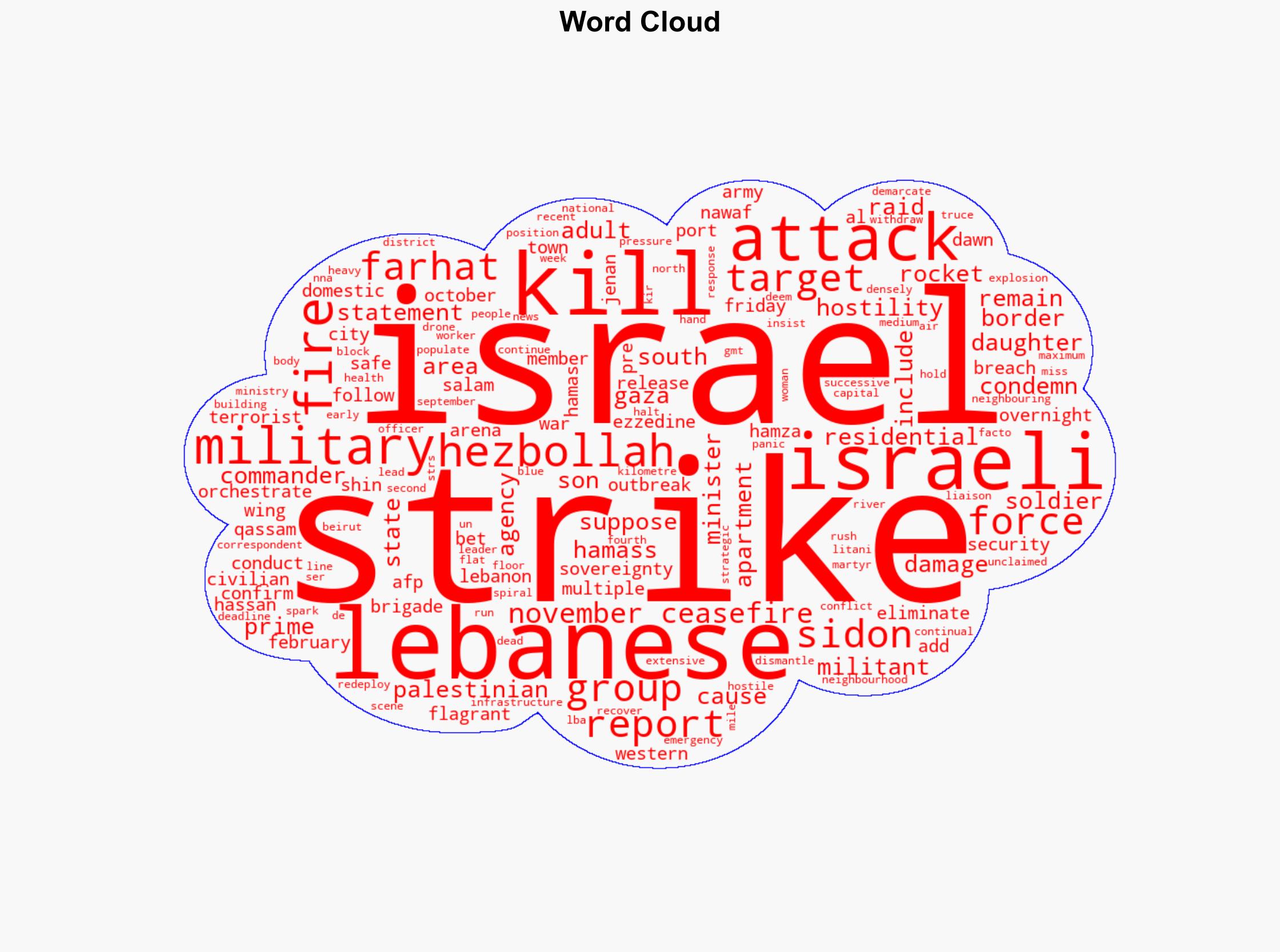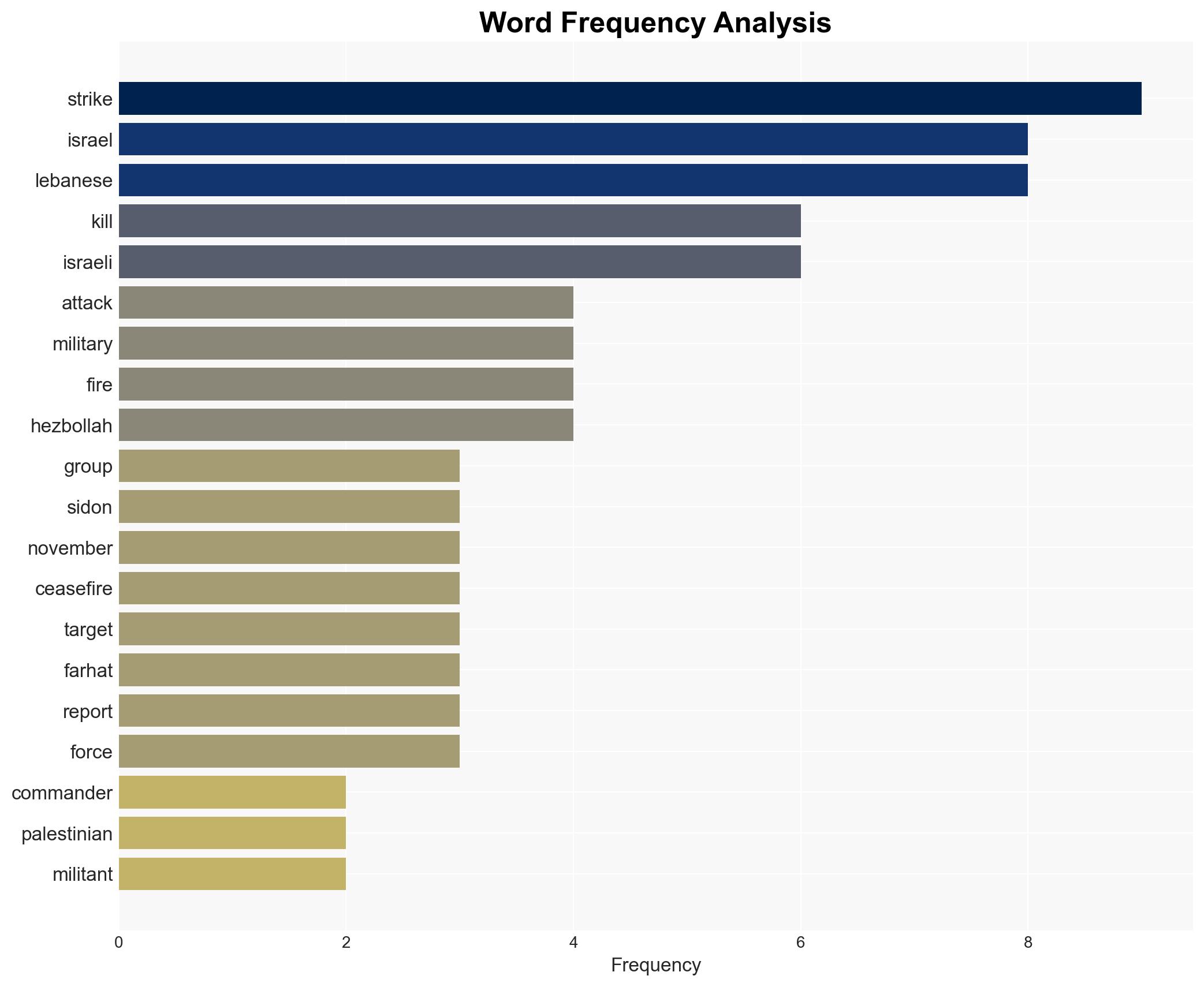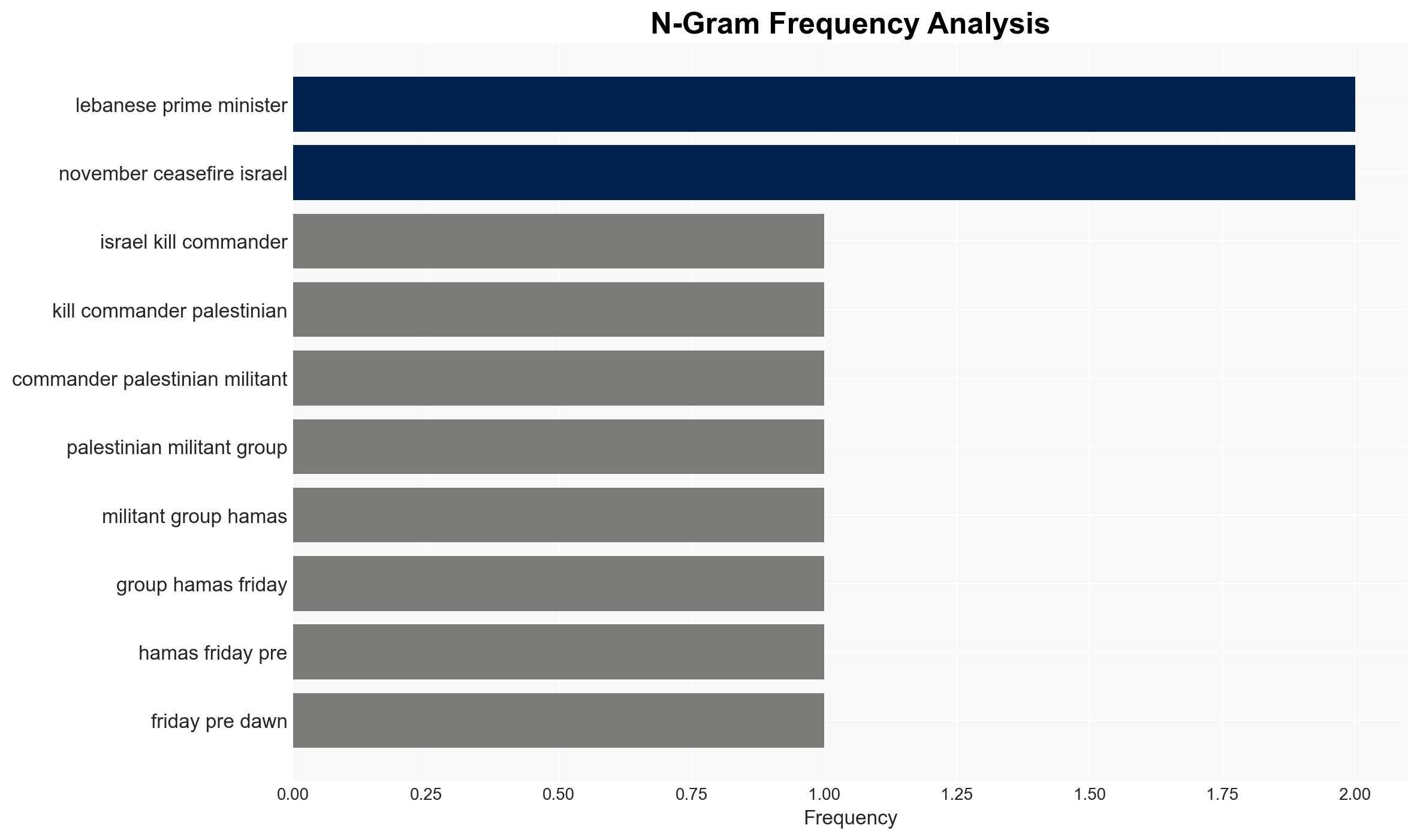Israel kills Hamas commander in Lebanon strike – Digital Journal
Published on: 2025-04-04
Intelligence Report: Israel kills Hamas commander in Lebanon strike – Digital Journal
1. BLUF (Bottom Line Up Front)
In a pre-dawn strike on the Lebanese port city of Sidon, Israel targeted and killed Hassan Farhat, a key figure in Hamas, along with his adult son and daughter. This action has been condemned by Nawaf Salam as a breach of Lebanese sovereignty and a violation of the November ceasefire. The strike is part of ongoing hostilities following the outbreak of war in Gaza in October. The situation poses significant risks to regional stability and could escalate tensions between Israel and Lebanon.
2. Detailed Analysis
The following structured analytic techniques have been applied for this analysis:
General Analysis
The strike on Sidon represents a significant escalation in Israeli military operations against Hamas outside of Gaza. Hassan Farhat was identified as a key orchestrator of attacks against Israeli targets, including rocket fire and the killing of an Israeli soldier. The strike resulted in heavy damage to a residential area, causing panic among civilians and drawing international condemnation. This incident highlights the fragile nature of the ceasefire and the potential for further conflict in the region.
3. Implications and Strategic Risks
The strike poses several strategic risks, including:
- Increased tensions between Israel and Lebanon, potentially leading to broader regional conflict.
- Potential retaliation by Hamas or allied groups, exacerbating security concerns for Israel.
- Undermining diplomatic efforts to stabilize the region and maintain the ceasefire agreement.
The incident also raises concerns about civilian safety and the humanitarian impact of military operations in densely populated areas.
4. Recommendations and Outlook
Recommendations:
- Engage in diplomatic efforts to de-escalate tensions and reinforce the ceasefire agreement.
- Enhance intelligence-sharing mechanisms to prevent further escalations and improve situational awareness.
- Consider humanitarian aid initiatives to support affected civilian populations in conflict zones.
Outlook:
Best-case scenario: Diplomatic interventions succeed in restoring the ceasefire, reducing hostilities, and stabilizing the region.
Worst-case scenario: Continued military actions lead to a broader conflict involving multiple regional actors.
Most likely outcome: Sporadic violence persists, with periodic escalations and international efforts to mediate tensions.
5. Key Individuals and Entities
The report mentions significant individuals and organizations, including Hassan Farhat, Nawaf Salam, and the Ezzedine al-Qassam Brigade. These entities play crucial roles in the ongoing conflict dynamics and are central to understanding the strategic landscape.





